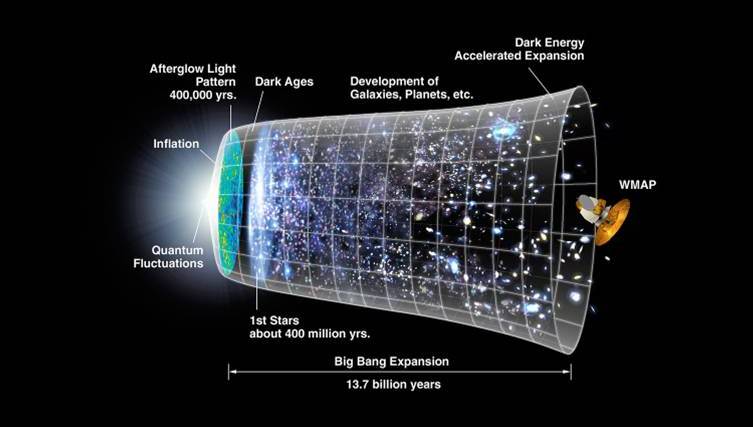[/caption]
From a University of Cambridge press release:
Remnants of the first stars have helped astronomers get closer to unlocking the "dark ages" of the cosmos. A team of researchers from the University of Cambridge and California Institute of Technology are using light emitted from massive black holes called quasars to "light up" gases released by the early stars, which exploded billions of years ago. As a result, they have found what they refer to as the missing link in the evolution of the chemical universe.
The first stars are believed to hold the key to one of the mysteries of the early cosmos: how it evolved from being predominantly filled with hydrogen and helium to a universe rich in heavier elements, such as oxygen, carbon and iron.
However, although telescopes can detect light reaching Earth from billions of light-years away, enabling astronomers to look back in time over almost all of the 13.7-billion-year history of the universe, one observational frontier remains: the so-called "dark ages." This period, lasting half a billion years after the Big Bang, ended when the first stars were born and is inaccessible to telescopes because the clouds of gas that filled the universe were not transparent to visible and infrared light.
"We have effectively been able to peer into the dark ages using the light emitted from a quasar in a distant galaxy billions of years ago. The light provides a backdrop against which any gas cloud in its path can be measured," said Professor Max Pettini at Cambridge's Institute of Astronomy (IoA), who led the research with PhD student Ryan Cooke.
Taking precision measurements using the world's largest telescopes in Hawaii and Chile, the researchers have used Quasar Absorption Line Spectroscopy to identify gas clouds called 'damped Lyman alpha systems' (DLAs). Among the thousands of DLAs known, the team have succeeded in finding a rare cloud released from a star very early in the history of the universe.
"As judged by its composition, the gas is a remnant of a star that exploded as much as 13 billion years ago," Pettini explained. "It provides the first analysis of the interior of one of the universe's earliest stars."
The results provide experimental observations of a time that has so far been possible to model only with computers simulations, and will help astronomers to fill gaps in understanding how the chemical universe evolved.
"We discovered tiny amounts of elements present in the cloud in proportions that are very different from their relative proportions in normal stars today. Most significantly, the ratio of carbon to iron is 35 times greater than measured in the Sun," Pettini said. "The composition enables us to infer that the gas was released by a star 25 times more massive than the Sun and originally consisting of only hydrogen and helium. In effect this is a fossil record that provides us with a missing link back to the early universe."
The study was published in Monthly Notices of the Royal Astronomical Society by Ryan Cooke, Max Pettini and Regina Jorgenson at the IoA, together with Charles Steidel and Gwen Rudie at the California Institute of Technology in Pasadena.
 Universe Today
Universe Today
